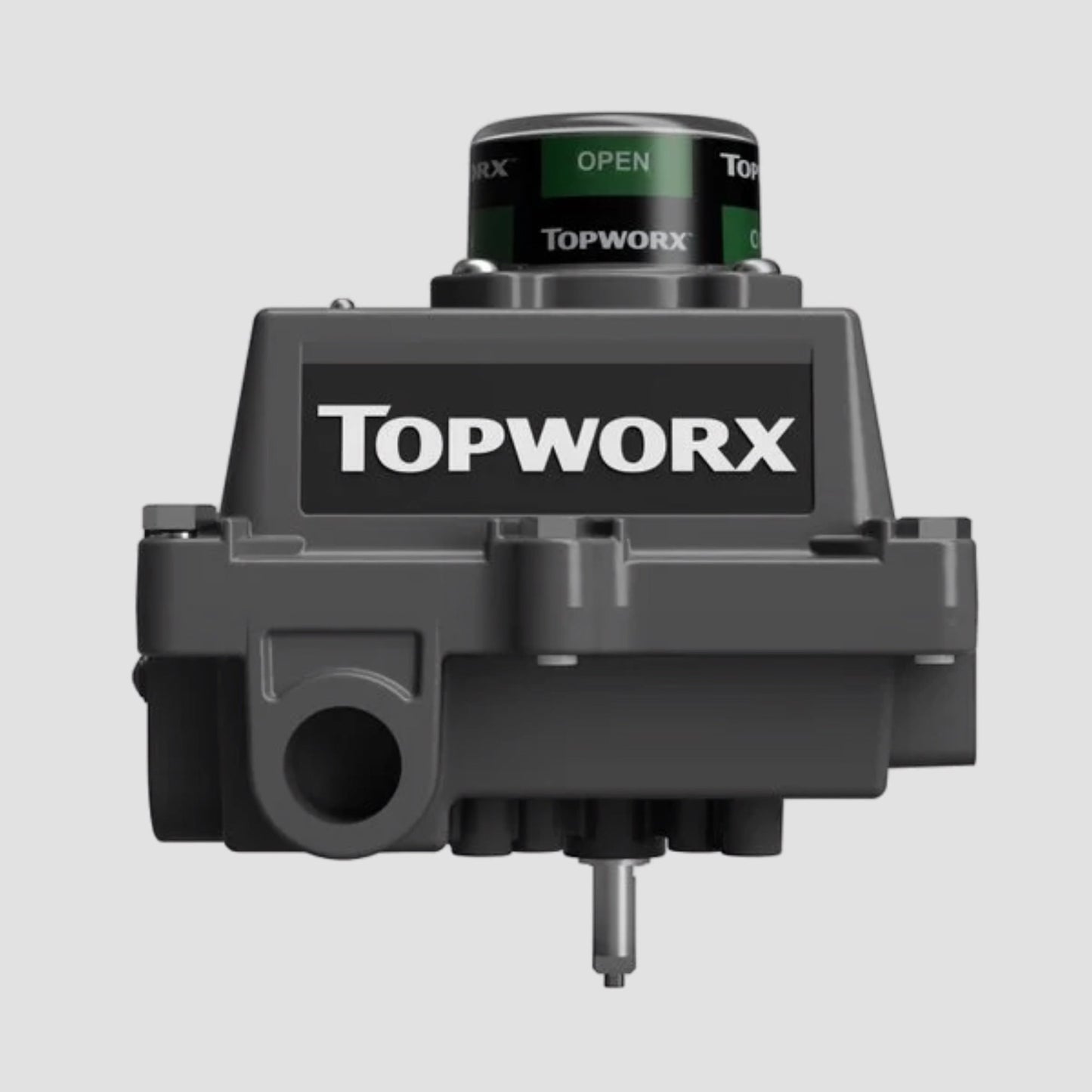Topworx Switchboxes
TopWorx Limit Switch Box DXP-M20GNES Valve Monitor
TopWorx Limit Switch Box DXP-M20GNES Valve Monitor
Couldn't load pickup availability
The TopWorx DXP-M20GNES Limit Switch Box is designed for precision valve monitoring in demanding environments. With a tropicalized aluminum enclosure (DXP), this valve monitor is built to withstand tough conditions, providing long-lasting durability. The unit includes two Mechanical SPDT sensors (M2), ensuring reliable and precise signal feedback for effective valve position indication. Its 90° visual display with green OPEN indication offers clear visibility, making it suitable for various industrial applications.
Additional features include a 316 stainless steel NAMUR shaft, offering corrosion resistance and compatibility with common mounting setups. Equipped with dual ¾" NPT conduit entries and silicone O-rings, this model is crafted for optimal performance in corrosive and high-moisture settings. While designed as an intrinsically safe option with no additional spool valves, Cv values, or manual overrides, it provides a streamlined solution for safe and efficient valve monitoring in hazardous environments.
Key Features:
- Enclosure: DXP - Tropicalized aluminum for enhanced durability in harsh environments
- Sensors: Dual Mechanical SPDT for reliable signal feedback
- Area Classification: Intrinsically safe for hazardous locations
- Visual Display: 90° green OPEN indicator for clear visibility
- Shaft: NAMUR 316 stainless steel, corrosion-resistant for robust performance
- Conduit Entries: Dual ¾" NPT for flexible wiring options
- Seals: Silicone O-rings to withstand temperature and chemical exposure
Share

FAQ's
What is the difference between a valve and an actuator?
What types of actuators are available?
The main types of actuators are:
Pneumatic actuators – use compressed air for fast, reliable operation.
Electric actuators – use electrical power for precise control.
Hydraulic actuators – use fluid pressure for high-torque applications.
Each type offers unique advantages depending on the environment, media, and system control needs.
How do I choose the right actuator for my valve?
To select the correct actuator, consider:
Valve type and torque requirement
Power source available (air, electric, or hydraulic)
Operating environment (temperature, humidity, hazardous area)
Control signal type (on/off or modulating)
Matching actuator torque and compatibility with the valve’s ISO mounting ensures reliable performance.
What are the main types of valves used in automation?
The most common valves in automated systems include:
Ball valves – for tight shutoff and quick operation.
Butterfly valves – for larger flow control with compact design.
Globe valves – for precise throttling and flow regulation.
Check valves – to prevent backflow.
Gate valves – for full bore flow isolation.
What’s the difference between a double-acting and spring-return actuator?
Double-acting actuators use air (or power) to both open and close the valve.
Spring-return actuators use air to open (or close) the valve, and a built-in spring to automatically return it to a safe position when power or air is lost — ideal for fail-safe operation.
How often should valves and actuators be serviced?
Regular maintenance intervals depend on operating conditions, but a good rule of thumb is to inspect every 6–12 months.
This includes checking for leaks, lubrication, seal wear, and actuator responsiveness to prevent unexpected downtime.

